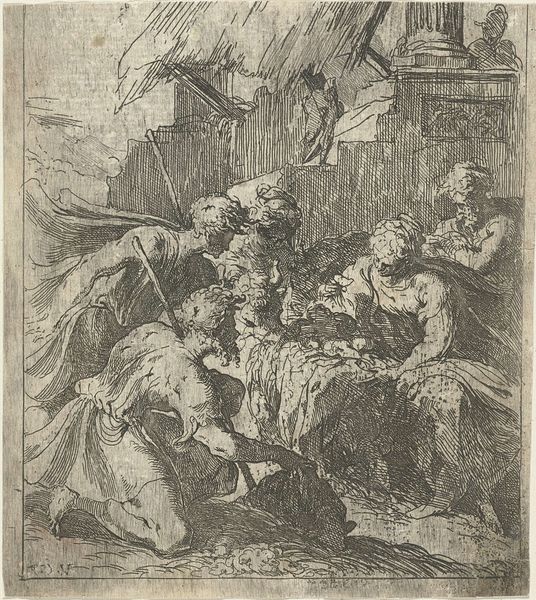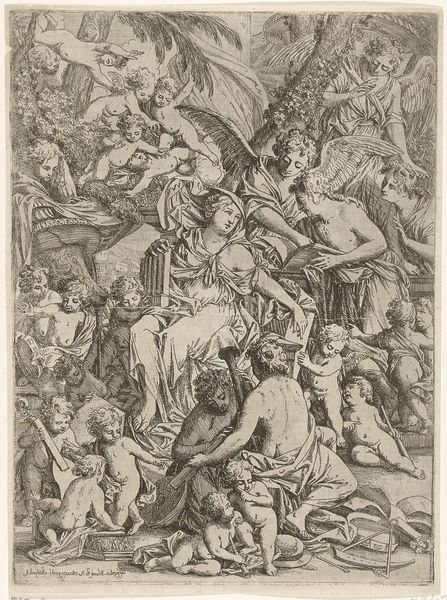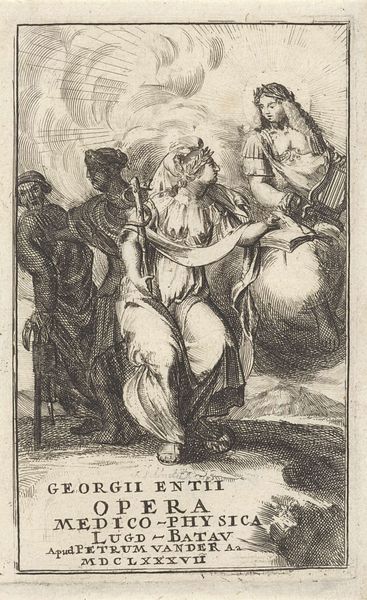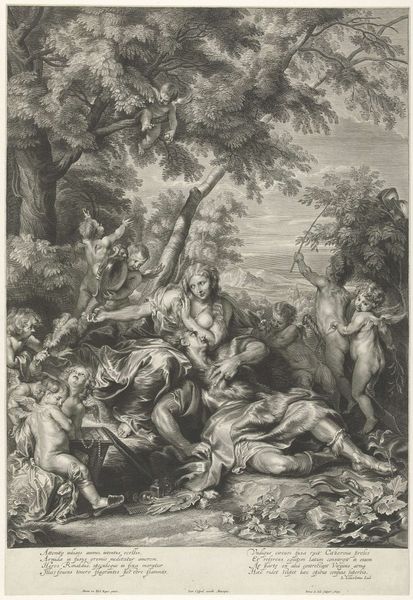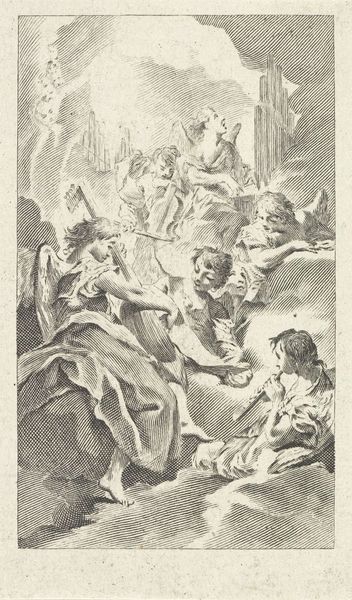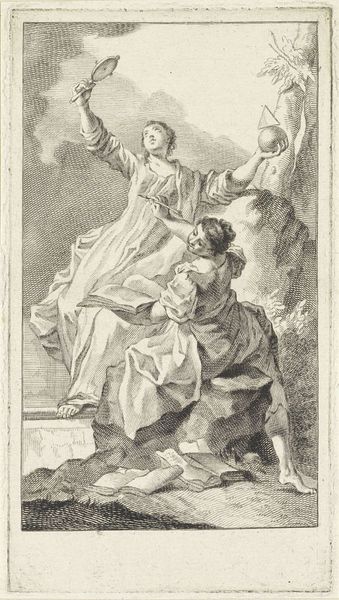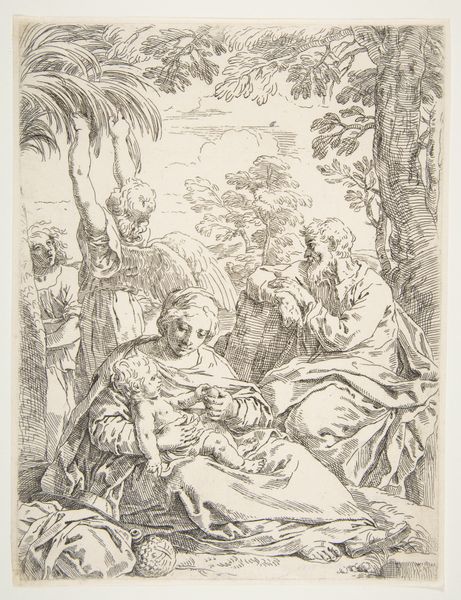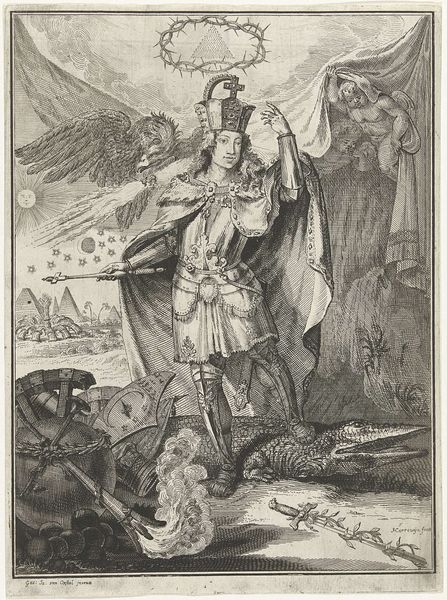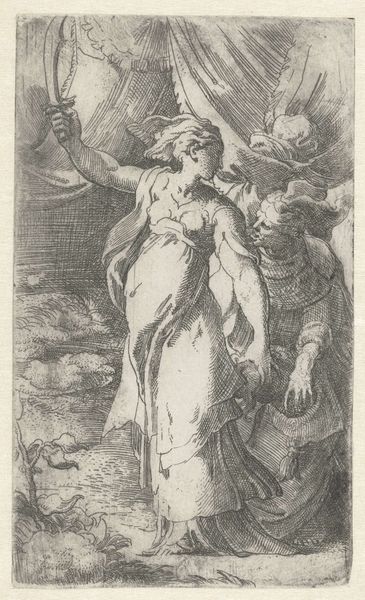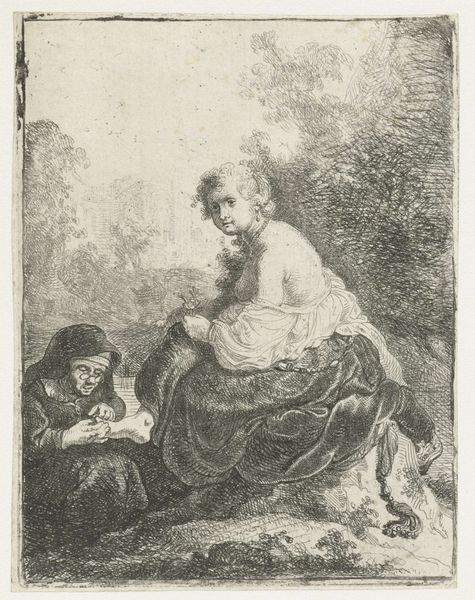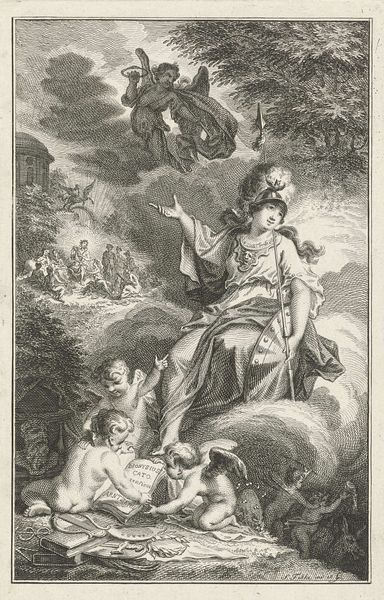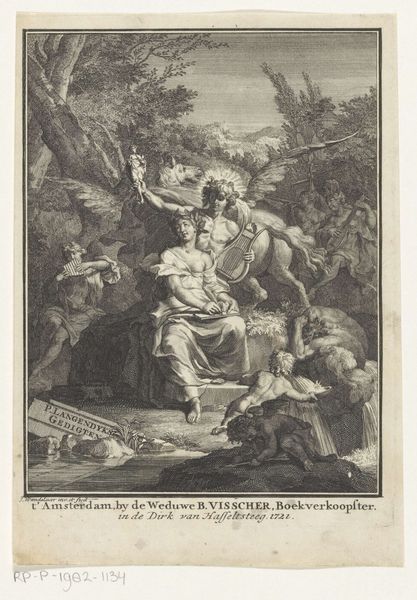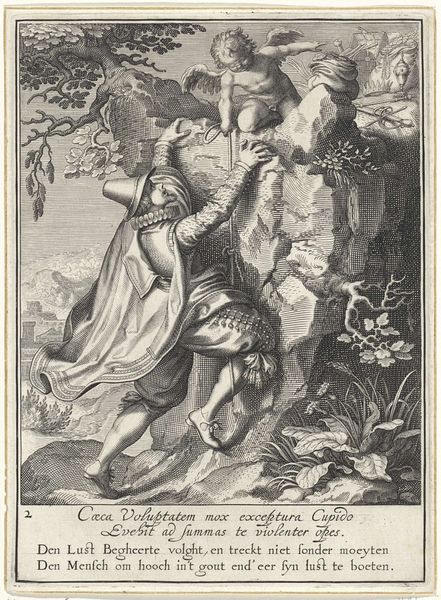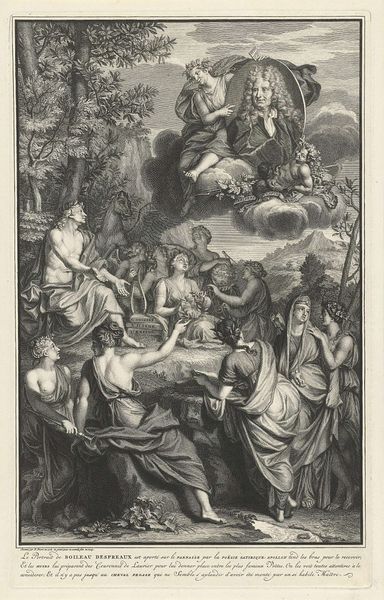
engraving
#
allegory
#
baroque
#
figuration
#
vanitas
#
history-painting
#
engraving
Dimensions: height 160 mm, width 115 mm
Copyright: Rijks Museum: Open Domain
Editor: So, this is "Maria Magdalena met crucifix en twee engelen," an engraving dating back to sometime between 1666 and 1711, by Louis de Deyster. It definitely has a somber mood. I’m particularly struck by the inclusion of the skull. What is your interpretation of this piece, looking at it through a historical lens? Curator: A striking example of Baroque art operating within a deeply religious and societal framework. The skull immediately signifies a 'vanitas' theme—a meditation on the transience of life. Consider the cultural context: the Catholic Church’s influence remained potent. Editor: So, Mary Magdalene, the crucifix, and even the angels, these are symbols sanctioned, in a way, by the Church itself? Curator: Precisely! This work visualizes approved iconography. Think of the historical forces at play here: the Council of Trent had pushed for art that clearly communicated religious narratives. This engraving participates in that project, instructing the viewer on piety and repentance through a well-known and sanctioned story. Do you notice the difference in how Mary Magdalene is represented? Is it an idealized woman or does it feel human? Editor: I see what you mean. It’s a delicate balance. Her expression is somewhat sorrowful, even contrite, but idealized. Curator: Which speaks to a broader point: Art doesn't exist in a vacuum. It is shaped by social expectation, religious doctrine and, here, even specific reforms within the church dictating how certain stories are retold visually. It asks its audience to engage with the divine through emotional and somewhat controlled experience. Editor: That really shifts my perspective. I was thinking of individual devotion, but I see it's much bigger than that. Curator: Exactly. By understanding this context, we gain a richer understanding of the artwork and its original function. It reflects not just faith, but power structures of the era.
Comments
No comments
Be the first to comment and join the conversation on the ultimate creative platform.
